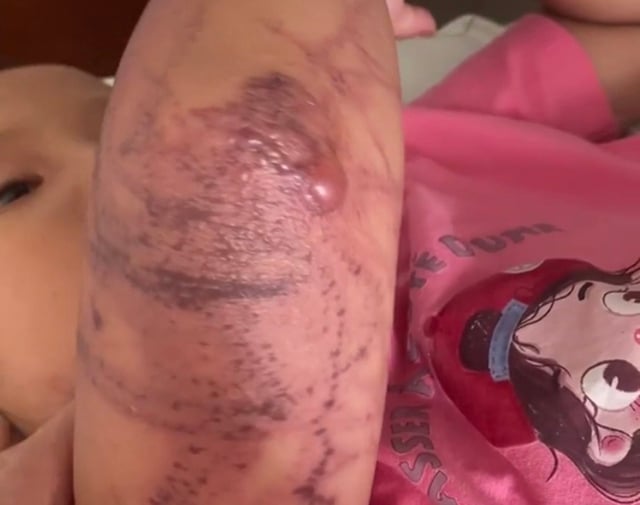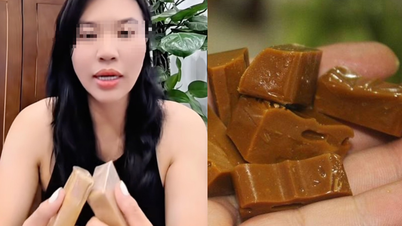Jellyfish stings occur when the jellyfish's tentacles come into contact with the skin, causing tiny, hooked spines to release venom. The venom directly affects the area of skin it comes into contact with and can enter the bloodstream. Even jellyfish that have washed ashore can still release venomous spines if touched.
Master - Doctor Nguyen Thi Quy, Traditional Medicine Dermatology - Aesthetics Clinic, University of Medicine and Pharmacy Hospital, Ho Chi Minh City - Facility 3, said that symptoms of jellyfish stings can range from mild pain (itching, or burning, swelling and dull pain spreading along the contact site) to more serious reactions such as (difficulty breathing, chest pain, abdominal pain, nausea and vomiting, drowsiness or confusion).
The severity of a jellyfish sting depends on the species and size of the jellyfish. Some dangerous jellyfish include box jellyfish, bluebottle jellyfish, sea nettle jellyfish, and lion's mane jellyfish. The age, physical condition, and health of the person stung (children are at higher risk of severe reactions). The length of time exposed to the stingers. The area of skin affected by the jellyfish.
Recently, many cases of jellyfish stings have had to be hospitalized - Photo: BVCC
First aid for jellyfish stings
Remove tentacles: Use tweezers to carefully remove any tentacles that are still visible on the skin.
Hot soak: Soak the stung area in hot water (43-45°C) for 20 to 45 minutes to relieve pain and possibly reduce the effects of the venom.
Apply hydrocortisone cream: To reduce inflammation and pain under the guidance of a doctor or pharmacist.
Doctor Nguyen Thi Quy said that you should not use sand, clothes... to rub or scrape the area stung by a jellyfish. This can increase the amount of venom absorbed into the skin.
Information circulating on the internet that rubbing white sugar on a jellyfish sting will relieve the burning sensation is completely unscientific . People stung by jellyfish should not do this to avoid spreading the wound and causing infection.
When to seek medical attention
Go to the nearest medical facility immediately if the sting spreads, is very painful, or does not improve after first aid. Signs of infection: redness, swelling, pus, fever. Serious symptoms such as difficulty breathing, fainting, or irregular heartbeat.
What to pay attention to when swimming
Avoid swimming during jellyfish warnings or jellyfish blooms. Wear protective gear (wetsuit, full body suit, protective footwear) when swimming in potentially dangerous waters. Ask a lifeguard or local person for information before entering the water. Do not touch jellyfish, even if they are dead or washed up on shore.
Jellyfish stings are a common but preventable marine accident. Understanding the symptoms, providing proper first aid, and knowing when to seek medical attention will help you protect yourself and your loved ones at the beach. Always be cautious and prepared when participating in water activities.
Source: https://thanhnien.vn/lay-duong-cat-trang-cha-vao-vet-thuong-sua-dot-se-het-bong-rat-185250607211706385.htm








![[Photo] Panorama of the Opening Ceremony of the National Press Festival 2025](https://vphoto.vietnam.vn/thumb/1200x675/vietnam/resource/IMAGE/2025/6/20/6b835ee92c2c4df587af73cb2d1f4f5f)



















![[Photo] General Secretary To Lam chairs the 14th Central Military Commission Conference](https://vphoto.vietnam.vn/thumb/1200x675/vietnam/resource/IMAGE/2025/6/20/a9d25fc6dd664fb9a3757502f32e5db0)


























![[Maritime News] Wan Hai Lines invests $150 million to buy 48,000 containers](https://vphoto.vietnam.vn/thumb/402x226/vietnam/resource/IMAGE/2025/6/20/c945a62aff624b4bb5c25e67e9bcc1cb)














































Comment (0)